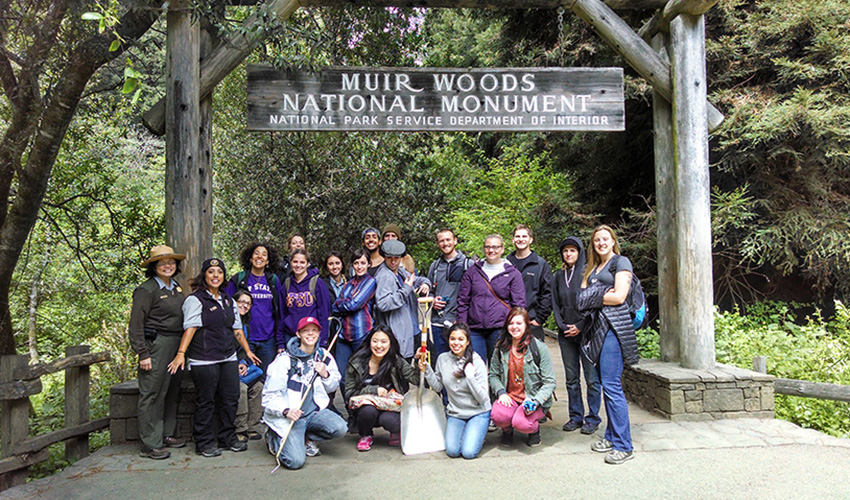Study finds U.S. Forest Service lands underused by minorities

SF State Recreation, Parks & Tourism students getting ready to restore a section of boardwalk and trail in Muir Woods. Photo credit: Nina Roberts
SF State Professor says public agencies need better strategies for outreach
Our national forests and grasslands — 193 million acres throughout the United States — are a national treasure intended for use by everyone. But a new study by the U.S. Forest Service and San Francisco State University Professor of Recreation, Parks & Tourism Nina Roberts finds that many ethnic minorities are not using or enjoying these places.
The researchers compared U.S. Census data on minorities living within 50 miles of a national forest boundary within the contiguous United States with the percentage of visitors to those national forests who are people of color. They found that although 35.5 percent of the people living within 50 miles of a national forest are racial and ethnic minorities, those minorities represent only 11.7 percent of national forest visitors each year, on average. Even in Forest Service regions surrounded by highly diverse populations, the results were the same.
“We have these amazing spaces in this country that many people of color are not using or enjoying,” said Roberts. She says this is because there is a fundamental lack of understanding on the part of public land agencies about how and why minorities use national forests and parks. “The Forest Service public lands are open to everyone, but institutional barriers and fears persist,” she said.
She noted that the Forest Service and other agencies have been striving to engage communities in some ways for decades. But according to Roberts, they need to increase their efforts to understand how diverse people use national forests and other public lands to better serve the communities they’re trying to reach.
“The Forest Service needs to put more effort into developing relationships with surrounding communities. One example might be to create special programs for them,” Roberts said. “It’s not about working harder, but about working smarter to create sustainable programs and more ongoing efforts — to not just check a box.” And she thinks agencies need to try harder to hire people of color, as that disparity has persisted for years.
With the white population predicted to be the minority in the U.S. by 2042, Roberts says, the study also highlights the need to build a multicultural constituency that will value and vote to preserve our public lands. “There’s a misperception that if legislation has protected these lands in perpetuity, then we’re all set, and we don’t need to vote or worry about preservation or protection,” she said. “Yet that is not true as laws and policies can change and be reversed as quickly as they are enacted.”